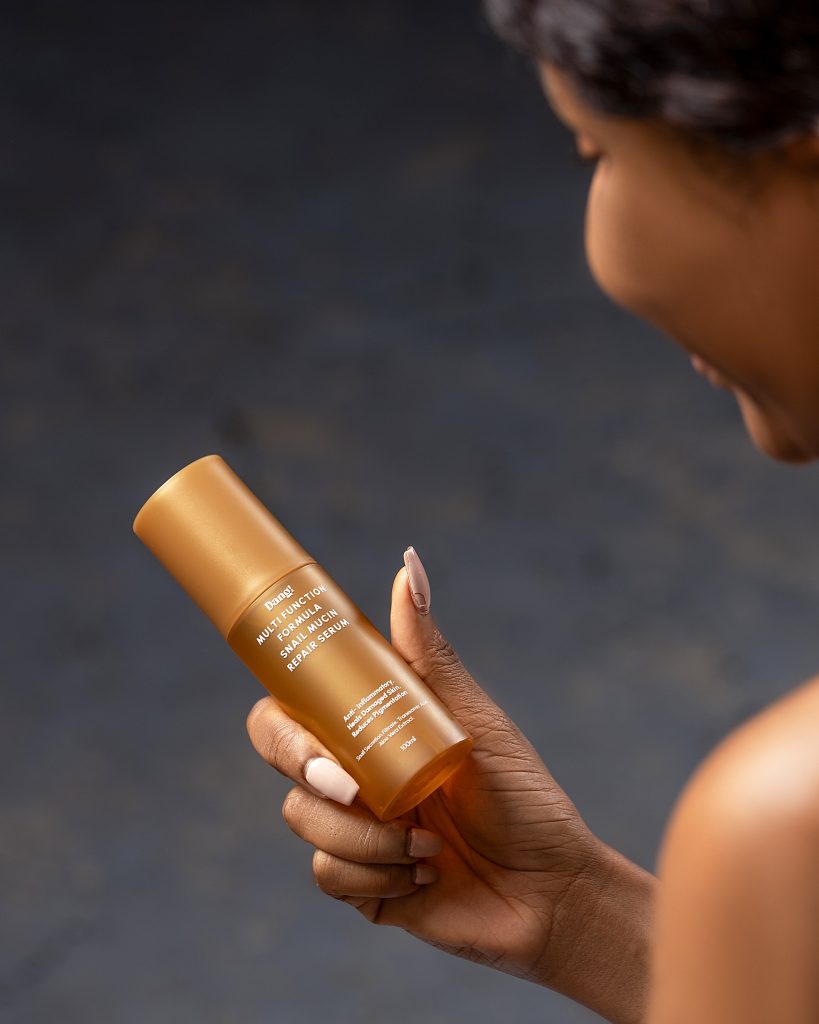
Free Shipping on Orders Over N200,0000 within Lagos
Buy 300k and get 20% off any spa service
Free Shipping For Orders over $150
Free Shipping For Orders over £100

In this blog post, we answer the question, What does tranexamic acid do and how can it benefit your skin? In the ever-changing world of skincare, there’s always a new ingredient or skincare active making waves, promising transformative results. One such ingredient that has been gaining attention lately for its remarkable efficacy is tranexamic acid.…
In this blog post, we answer the question, What does tranexamic acid do and how can it benefit your skin?
In the ever-changing world of skincare, there’s always a new ingredient or skincare active making waves, promising transformative results. One such ingredient that has been gaining attention lately for its remarkable efficacy is tranexamic acid.
But what exactly does it do for your skin?
In this comprehensive guide, we’ll delve deep into the science behind this powerhouse ingredient, uncovering its benefits, potential side effects, and how you can incorporate skincare products with this ingredient into your skincare routine to achieve a radiant complexion.
So, if you’ve heard about tranexamic acid lately and are wondering what it does, buckle up as we embark on a journey to uncover its secrets.
Tranexamic acid, often abbreviated as TXA, is a synthetic derivative of the amino acid lysine. It was originally developed as a medication to control bleeding and heavy menstrual bleeding in women.
However, its uses now extend far beyond the realm of blood science (haematology). In recent years, this compound has attracted attention in the skincare world for its ability to address hyperpigmentation, inflammation, and other skin concerns like melasma.
Overall, tranexamic acid is a multifunctional compound, offering many benefits even in the skincare world. As research continues to uncover its potential, we can expect to see even more innovative uses for this versatile ingredient in the future.
Note: In the skincare world, tranexamic acid isn’t typically used in its raw state but rather as an ingredient incorporated into various skincare products, such as serums, creams, and masks. These formulations are carefully crafted by skincare experts to ensure optimal efficacy and safety when addressing specific skin concerns.
Put simply, tranexamic acid, or TXA for short, in skincare helps to address issues like dark spots, uneven skin tone, and melasma. In addition, it is beneficial in the treatment of acne and promotes skin barrier repair.
In the skincare world, this compound helps to regulate melanin production, making it a powerful ally in the quest for a brighter, more even complexion. Melanin is the pigment responsible for the colour of our skin.
Its overproduction can lead to the formation of dark spots, melasma, and other forms of hyperpigmentation.
Overall, tranexamic acid works by interrupting the pathway that triggers melanin production, thereby preventing the formation of excess pigment. This not only helps fade existing dark spots but also hinders the formation of new ones, resulting in a more uniform skin tone over time.
This powerhouse ingredient boasts a range of advantages that make it a must-have in any skincare aficionado’s arsenal. Let’s explore some of the key benefits:
One of the most notable benefits of this ingredient is its ability to tackle hyperpigmentation effectively. Whether it’s dark spots, sun damage, or melasma, tranexamic acid reduces the production of melanin.
By doing so, it helps fade existing dark spots and prevents the formation of new ones, resulting in a more even-toned complexion.
In essence, if you’re looking for a cream or serum for wrinkles and dark spots, using one containing this ingredient will be another effective option.
Tranexamic acid also contains powerful anti-inflammatory properties, making it an excellent choice for those with sensitive or acne-prone skin. By reducing inflammation, it helps calm redness, soothe irritation, and promote overall skin health.
Say goodbye to dull skin. This ingredient has a brightening effect that gives that coveted glow from within. By inhibiting melanin production and promoting cell turnover, it helps reveal fresher, more radiant skin.
If you’ve ever dealt with post-inflammatory hyperpigmentation (PIH) due to acne or other skin conditions, tranexamic acid could be your saving grace. Its ability to fade dark spots and prevent further pigmentation makes it an invaluable ally in the quest for clear, blemish-free skin.
Beyond its pigment-correcting prowess, this ingredient also helps strengthen the skin’s natural barrier function. By boosting moisture retention and fortifying the skin’s protective barrier, it helps keep environmental aggressors at bay while ensuring optimal hydration levels.

Now that we understand the potential benefits of tranexamic acid for the skin, let’s talk about how you can incorporate it into your skincare routine for maximum benefits.
Whether you’re dealing with hyperpigmentation, melasma, or simply aiming for a more even complexion, here’s a step-by-step guide on how to use products containing this ingredient in your routine.
Tranexamic acid can be found in various skincare products, including serums, creams, and masks. Look for high-quality products specifically formulated with tranexamic acid to ensure you’re getting the correct concentration for your skin concerns.
This ingredient is one of the major components of the Dang Ageless Multi-Function Formula Snail Mucin Repair Serum or Dang! Snail Secretion Filtrate Repair Cream.
Formulated in South Korea by board-certified dermatologists, this snail mucin serum contains minerals, antioxidants, and other ingredients like tranexamic acid that help reduce hyperpigmentation, improving the overall appearance of the skin.
In addition, this potent ingredient is also a major ingredient in Dang! snail filtrate repair cream. This cream is super efficient at restoring suppleness & reducing puffiness in the skin.
Whichever of these products you decide to use, you’ll be sure to reap the benefits of tranexamic acid.
You can learn more about the benefits of the snail mucin on the skin.
Tranexamic acid can be used alongside other skincare ingredients, but it’s essential to know how to apply skincare products in the right order for maximum efficacy. Generally, you should apply products containing this ingredient after cleansing and toning but before heavier moisturisers and oils.
Here are the steps to follow to include tranexamic acid in your routine:
Before diving headfirst into a new skincare ingredient, it’s essential to perform a patch test to check for any potential adverse reactions. So apply a small amount of the product to your inner forearm and monitor for any signs of irritation or sensitivity.
When introducing this product into your routine, start with a lower concentration to allow your skin to gradually absorb it. Begin by using the product a few times a week, then gradually increase the frequency as tolerated.
Consistency is key when it comes to skincare results. While some may experience visible improvements in their skin tone relatively quickly, it may take several weeks or even months of consistent use to see the full benefits of tranexamic acid.
So be patient and consistent with your routine.
By following these simple steps and incorporating tranexamic acid into your daily skincare routine, you can harness the power of this potent ingredient to achieve a brighter, more radiant complexion.
You can take this skin type quiz to discover your skin type.
In conclusion, tranexamic acid is a skincare powerhouse, offering myriad benefits from reducing hyperpigmentation to soothing inflammation. Our Ageless Multi-Function Formula Snail Mucin Repair Serum and Snail Secretion Filtrate Repair Cream harnesses the power of this ingredient and has been meticulously crafted by dermatologists for radiant and beautiful skin.
Remember, consistency is key. Embrace tranexamic acid’s potential for radiant, healthy skin. Here’s to your skincare journey!
Apply tranexamic acid products according to the instructions provided on the packaging or as advised by a professional. Generally, we recommend using it once or twice daily, depending on the concentration and formulation of the product.
Yes, it is effective in reducing the appearance of dark spots and hyperpigmentation by inhibiting melanin production. This can lead to a more even skin tone over time.
Yes, it may help fade certain types of scars, particularly those caused by hyperpigmentation or post-inflammatory pigmentation. However, it may not be as effective for other types of scars, such as raised or indented scars.
No, tranexamic acid is not a retinol. Retinol is a form of vitamin A that is commonly used in skincare products for its anti-aging benefits, while tranexamic acid is a synthetic derivative of the amino acid lysine primarily used for treating hyperpigmentation.
Yes, retinol and tranexamic acid can be used together in a skincare routine, but it’s essential to introduce them gradually to prevent irritation. Start by using them on alternate days or at different times of the day, and always follow up with a broad-spectrum sunscreen during the day.
While this compound is generally effective in reducing hyperpigmentation, it’s essential to note that individual reactions may vary. In some rare cases, this ingredient may potentially worsen hyperpigmentation or cause skin irritation.
Therefore, it’s always advisable to perform a patch test and consult with a professional before incorporating it into your routine.




